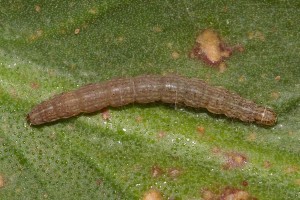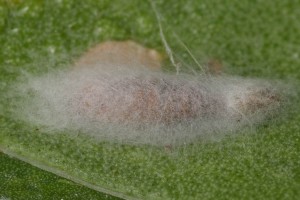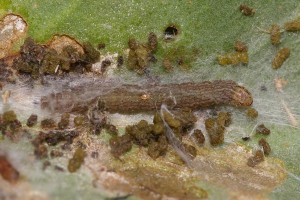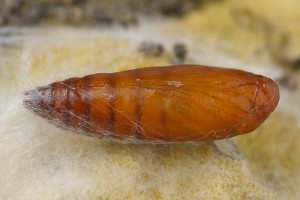

 +2Kontinente:EU
+2Kontinente:EU1. Lebendfotos
1.1. Falter
1.2. Raupe
1.3. Puppe
2. Biologie
2.1. Nahrung der Raupe
- [Plumbaginaceae:] Limonium scoparium [= Limonium meyeri]
Bidzilya et al. (2017) berichten zur Raupe: "The very mobile olive-brown mature larvae were regularly observed from late May to mid-June, in July and early August and in October feeding singly under light silken shelter on leaves of Limonium meyeri (Plumbaginaceae). The larvae made irregular holes in leaves. When frightened they leave the shelter by moving very quickly backwards, jump down to the litter and hide within cracked soil or in other coverings."
3. Weitere Informationen
3.1. Etymologie (Namenserklärung)
Nupponen & al. (2000: 10): “Lat. aegra = difficult. The name refers to the history of the discovery of the species. We were searching for a sand dune region in Novoiletzk in the evening. While driving along a steppe, the habitat suddenly changed to a wetland and our car partly sunk into a soft ground. We were forced to wait there one day for help. Despite difficulties, we quickly jumped out from the car for collecting, and later found the first specimen of S. aegrella among the material.”
3.2. Faunistik
Die Art wurde aus dem südlichen Ural-Gebirge beschrieben. Bidzilya et al. (2017) melden die Art von mehreren Fundstellen der Krim (Ukraine).
(Autor: Erwin Rennwald)
3.3. Typenmaterial
Nupponen & al. (2000: 9): “Holotype: ♂ (Fig. 8): Russia, southern Urals, 50°59'N 54°17-22'E, 100 m, Orenburg oblast, Novoiletzk 8 km E, 08.VI.1998, leg. J. Junnilainen. Genitalia slide: K. Nupponen prep. no. 3/14.II.1999. In coll. J. Junnilainen.” — Paratypen: 9 ♂♂ und 1 ♀.
3.4. Literatur
- Bidzilya, O.V., Budashkin, Y.I. & A. Zhakov (2017): Checklist of scythridid moths (Lepidoptera, Scythrididae) of Ukraine with description of two new species. — Zootaxa 4291 (3): 481–503.
- Erstbeschreibung: Nupponen, K., Bengtsson, B. Å., Kaitila, J.-P., Nupponen, T., Junnilainen, J. & V. Olschwang (2000): The scythridid fauna of the southern Ural Mountains, with description of fourteen new species (Lepidoptera: Scythrididae). — Entomologica Fennica 11 (1): 5-34. [PDF auf journal.fi]








